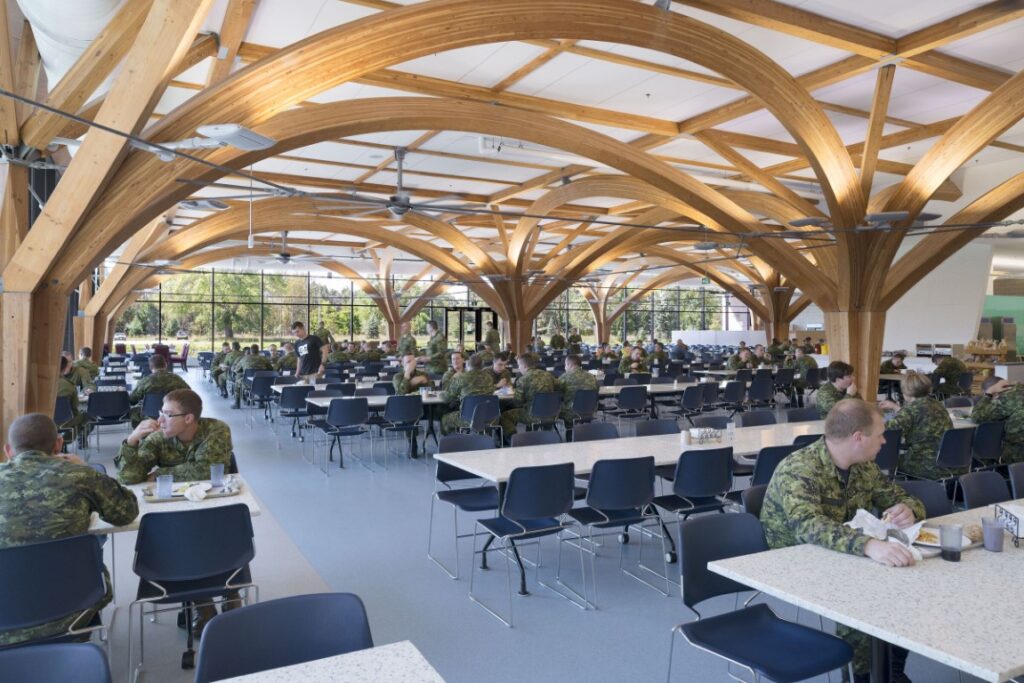Architects: ZAS Architects + Interiors & FABRIQ Architecture
Country: Canada
Year: 2018
Photographs: Brenda Liu
Text description and images are provided by the architects.
The modernization of Canadian military bases across the country by the Department of National Defence (DND) led to the master plan development of the Curtiss & Vickers All Ranks Dining Facilities. In this case, consolidation and centralization of facilities have created a training environment that allows military cadets to walk no more than 500m to all food service facilities.
To accomplish this, the base’s four aging 1950’s dining facilities were demolished and replaced with two nearly identical facilities strategically located on campus. The design strategy for this new prototype dining and kitchen facility focused on providing a pleasant, efficient, and enduring building with plenty of natural light and optimized interior traffic flows. The facility is designed to address current food service deficiencies and to prepare for future needs, seating 750 at a time and 1,500 diners per meal.
It is difficult to overstate the importance of wayfinding forward flow in such a facility. The building’s plan, forms, colour, and materials are all used effectively to convey an intuitive understanding of path and use – diners who have never entered the building are naturally brought through the facility in a loop, completing it with no cross-circulation. This is very important considering the volume of diners.
Forward flow design is also used in the service and kitchen areas. From deliveries to the table and back to the trash, the design is carefully tailored to avoid cross- traffic conditions. The use of form and colour to help inform usage is also utilized on the exterior. Spaces intended for the public are housed in the light-coloured block, while the darker block is reserved for the technical and kitchen areas.
The exterior forms were kept deliberately orthogonal, streamline, and understated to produce an elegant, timeless building which fits in with the existing built environment at the base. As you enter the facility the aesthetic changes and you are reminded of the history of the pine forests that were once dominant in the landscape of the site in the form of the dramatic glue laminated curved structure of the columns and beams.
The interior design focuses on achieving a pleasant, easily maintained space optimized for clear and instinctive wayfinding – achieved through use of forms, materials and colours inspired by the military ribbon graphic. This project targeted LEED Silver certification. Along with common ecological features, the project was particularly innovative in the use of ultra-high efficiency kitchen equipment and providing daylight and exterior views – something seldom found in large commercial kitchens.
VIEW GALLERY







